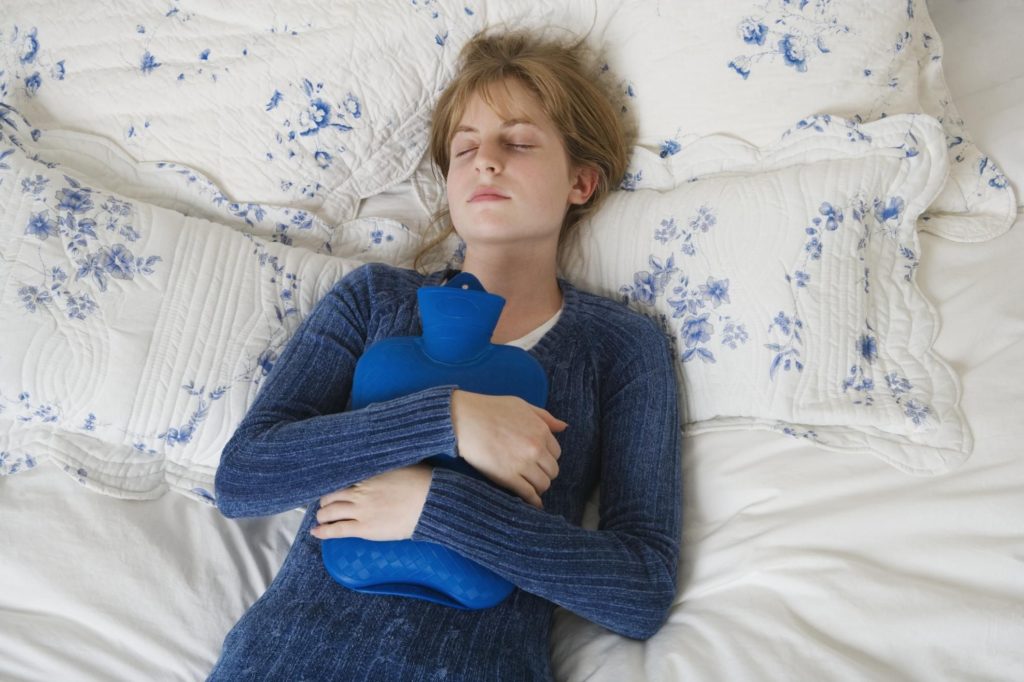Amenorrhea disease is an absence of menstruation in a woman of reproductive age. The word “amenorrhea” comes from the Greek has for privation, even for months. Between 2% and 5% of women would be affected by amenorrhea. It is a symptom of which it is important to know the cause. The absence of menstruation is quite natural in the case of pregnancy and breastfeeding. However, apart from these situations, it is a sign indicative of chronic stress or even a health problem such as anorexia or a disorder of the thyroid gland.
Amenorrhea Disease: Types
- Primary amenorrhea: it is when, at the age of 16, the rule is not triggered. Secondary sexual characteristics (development of the chest, pubic hair and armpits, and distribution of adipose tissue in the hips, buttocks, and thighs) may nevertheless be present.
- Secondary amenorrhea: it is when a woman has already been menstruating and stopped menstruating for one reason or another over a period equal to at least three intervals of earlier menstrual cycles or six months without menstruation.

Amenorrhea Disease: When to consult when there are no rules?
Often, not knowing why you are suffering from amenorrhea is a concern. The following persons should consult a physician: Women with primary or secondary amenorrhea.
- In cases of post-contraceptive amenorrhea, a medical evaluation is necessary.
- If amenorrhea persists more than six months in women who have been on birth control pills, having worn a hormonal IUD Mirena, or more than 12 months after the last injection Of Depo-Provera®.
Important: Sexually active women who do not take hormonal contraception should take a pregnancy test if their period is delayed for more than eight days, even when they are “certain” not pregnant.
Note that bleeding that occurs under hormonal contraceptive (especially the false rules generated by the contraceptive pill) is not evidence of non-pregnancy.

Amenorrhea Disease: Diagnosis
In most cases, clinical examination, a pregnancy test, and sometimes an ultrasound of the sexual organs are sufficient to guide the diagnosis. There is also the wrist radiograph (to assess pubertal development), hormonal assays, or chromosomal sex performed in rare cases of primary amenorrhea.

Amenorrhea Disease: Causes of lack of rules
There are many causes of amenorrhea. Here are the most frequent in descending order:
Pregnancy
It is the most common cause of secondary amenorrhea that is the first suspected in a sexually active woman. Surprisingly, this cause is often discarded without prior verification, which is not without risk. Some treatments indicated to treat amenorrhea, contraindicated in pregnancy. And with commercially available tests, the diagnosis is simple.
A delay of puberty without gravity
This is the most common cause of primary amenorrhea. The age of puberty is normally between 11 and 13 years but can vary greatly depending on ethnicity, geographic location, diet, and health status. In developed countries, delayed puberty is common in young women who are very thin or athletic. It would seem that these young women do not have enough fat to allow the production of estrogen hormones.
Estrogens allow thickening of the uterine wall, and later menstruation if the egg has not been fertilized by a spermatozoon. In a way, the bodies of these young women naturally protect themselves and report that their fitness is inadequate to support a pregnancy. If their secondary sexual characteristics are present (appearance of breasts, pubic hair, and armpits), there is no worry to have before the age of 16 or 17 years. If signs of sexual maturation are still absent at the age of 14, a chromosomal problem (a single-sex chromosome X instead of 2, a disease is known as Turner’s syndrome) suspected, a Development of the reproductive system or a hormonal problem.
Breastfeeding
Often breast-feeding women do not have menstruation. However, note that they can still have ovulation during this period, and therefore a new pregnancy. Breast-feeding suspends ovulation and protects against pregnancy (99%) only if:
- The baby takes exclusively the breast.
- The baby is less than 6 months old.

Amenorrhea Disease: Evolution and possible complications
The duration of amenorrhea depends on the underlying cause. In most cases, amenorrhoea, reversible and is easily treated (except, of course, amenorrhea due to genetic abnormalities, non-operable malformations, menopause or ablation of l Uterus and ovaries). However, when long-term amenorrhea left untreated, the cause may eventually reach reproductive mechanisms.
In addition, amenorrhea associated with a lack of estrogen (amenorrhea caused by demanding sports or eating disorders) increases the risk of osteoporosis in the long-term – thus fractures, instability of the vertebrae, and lordosis – since estrogens play an essential role in preserving bone structure. It is now well known that female athletes with amenorrhea have lower bone density than normal, which is why they are more prone to fractures. If moderate exercise helps prevent osteoporosis, excess exercise, however, has the opposite effect if not balanced by higher caloric intake.

Amenorrhea Disease: Medication
Hormonal treatments
In the case of ovarian dysfunction in a young woman, hormone treatment suggested so that the development of sexual characteristics and fertility occurs, and to prevent osteoporosis in the long-term. For women who have undergone surgical removal of the uterus and ovaries very early (before the presumed age of their menopause), surrogate hormone therapy including estrogen and progestin proposed to prevent osteoporosis and other Consequences due to the lowering of circulating hormone levels. This treatment, interrupted around 55 years.
Caution: this treatment not prescribed to women who have undergone an ablation of the uterus or ovaries for hormone-dependent cancer. It’s not prescribed for women who have undergone ovarian castration by radiotherapy or chemotherapy for breast cancer.
Apart from these situations, no hormonal treatment is effective in bringing about the return of the rules. On the other hand, “regularized cycle” treatments (for example, taking a synthetic progestin in the second half of the cycle for women with irregular periods who would like a regular cycle to conceive) not based on any scientific basis. They contribute to accentuate the disorders of the menstrual cycle by compromising the spontaneous occurrence of the ovulations. It is not the regularity of the cycle that counts, but the respect of the cycle as it is in a given woman.
Non-hormonal therapy
When amenorrhea is due to a high prolactin secretion associated with a benign pituitary tumor, bromocriptine (Parlodel®) is a highly effective drug that decreases prolactin levels and allows for the return of menstruation. It is the same treatment given to women who do not wish to breastfeed immediately after delivery.
Psychotherapy
If amenorrhea accompanied by a psychological disorder, the doctor may offer psychotherapy. Parallel use of hormonal treatments discussed, depending on the age of the woman, the duration of amenorrhea, and the adverse effects of hormonal deficiency (if any). However, psychotropic drugs are avoided, as they may cause amenorrhea.
Amenorrhea is associated with anorexia necessitates follow-up by a multidisciplinary team, including nutritionist, psychotherapist, psychiatrist, etc. Anorexia often affects adolescents or young women. In cases of severe psychological trauma (rape, loss of a loved one, accident, etc.) or personal conflicts (divorce, financial difficulties, etc.), amenorrhea lasting several months, Especially in a woman whose psychic balance was already fragile. The best treatment is then to consult a psychotherapist.
Surgical treatment
If the amenorrhea is caused by a malformation of the reproductive system, surgery can sometimes be undertaken (in the case of imperforation of the hymen, for example). However, if the malformation is too great (Turner syndrome or insensitivity to androgens), surgery will only have a cosmetic and comfort function by altering the appearance and functionality of the undeveloped sexual organs, but will not “return” the rules.


